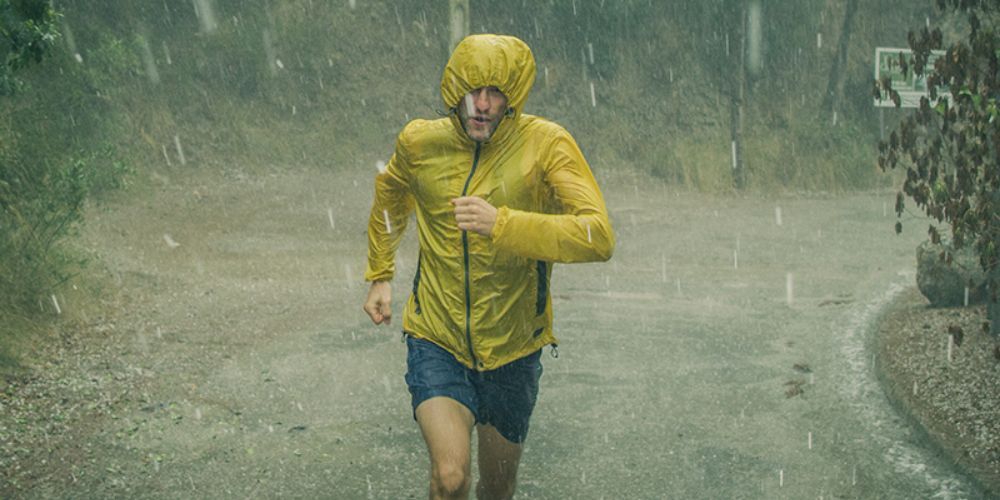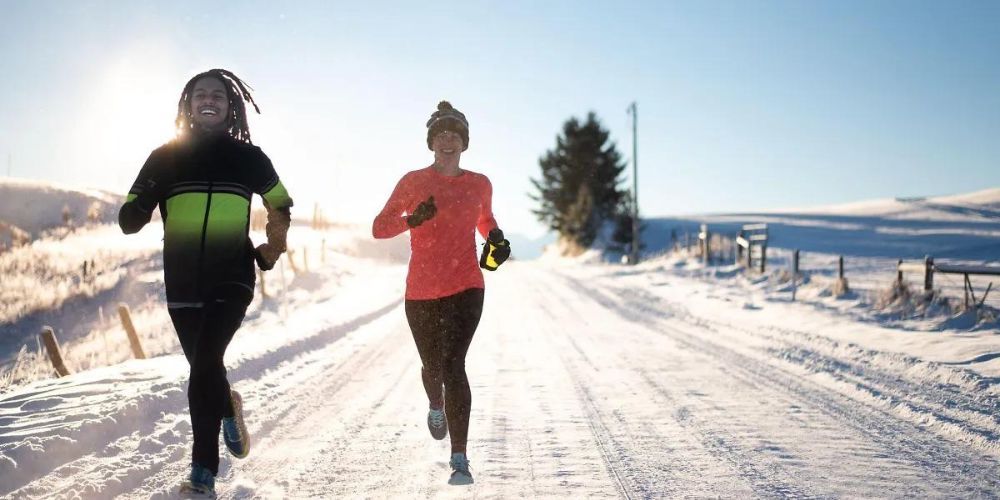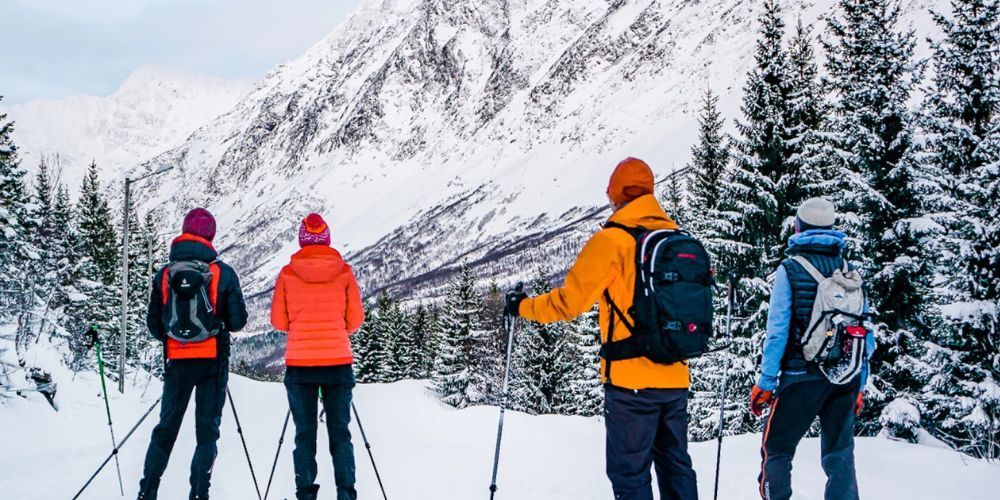The Ultimate Guide to Running in Different Weather: Tips and Techniques for All Seasons
July 15, 2024
Running consistently throughout the year can be a daunting task, especially when faced with unpredictable or extreme weather conditions. The frustration of disrupted training routines and the concern for personal safety make it challenging to stay on track. But did you know that adapting your running technique and gear according to the season can not only keep you safe but also enhance your performance?
To tackle this challenge head-on, we've dug deep into expert advice, tested gear recommendations, and perfected techniques suitable for any climate. Imagine turning a sweltering summer day into just another run by simply wearing moisture-wicking fabrics and staying hydrated. Now, let's explore how you can make your hot-weather runs more comfortable.
In "The Ultimate Guide to Running in Different Weather," we provide comprehensive advice for adjusting your running regimen based on various weather scenarios. For example, in hot weather, it's essential to hydrate adequately, recognize signs of heat exhaustion, and adjust your running pace. In cold weather, wearing appropriate layers and materials like wool or fleece can help maintain body warmth. No matter the weather, our guide offers valuable insights to optimize your running experience.

Dressing for Hot Weather Runs
When it comes to running in hot weather, comfort is key. The clothes you wear can make a big difference in how you feel during and after your run. Here are some tips for dressing appropriately for those sweltering summer runs.
Opt for Lightweight, Breathable Fabrics
Choosing the right fabrics can make all the difference. Look for moisture-wicking fabrics like polyester or technical synthetics that can draw sweat away from your skin. These materials help to keep you dry and comfortable by allowing moisture to evaporate quickly. Avoid cotton as it tends to retain moisture, leaving you feeling damp and uncomfortable throughout your run.
In addition, consider investing in running gear specifically designed for hot weather conditions. Brands like SOAR and Nike offer garments made with advanced cooling technology, ensuring maximum breathability while providing protection from harmful UV rays.
Sun Protection
Running under the scorching sun can take a toll on your skin, so don't forget to protect yourself. Use a broad-spectrum sunscreen with an SPF of 30 or higher to shield your skin from harmful UV rays. Consider wearing UV-protective clothing to cover as much skin as possible and minimize exposure to direct sunlight. Accessories such as a lightweight cap and polarized sunglasses can also offer additional protection for your eyes and face.
Taking these precautions not only protects your skin from sunburn but also reduces the risk of long-term skin damage caused by prolonged sun exposure.
Hydration Gear
Staying hydrated is crucial when running in hot weather. Carrying a hydration belt or vest equipped with water and electrolyte solutions ensures that you have easy access to fluids throughout your run. In extreme heat, dehydration can set in rapidly, leading to fatigue, dizziness, and even heatstroke. It's essential to drink small amounts frequently to maintain optimal hydration levels.
Consider incorporating sports drinks with electrolytes into your hydration routine, especially for longer runs where you might be sweating excessively. This helps replenish important minerals lost through sweat, aiding in maintaining proper muscle function and overall performance.
Minimalist Footwear
The right footwear can significantly impact your comfort and performance in hot weather conditions. Look for lightweight, breathable running shoes with ample ventilation to keep your feet cool and dry. Brands like Nike Free and Adidas UltraBoost are known for their innovative designs that prioritize breathability without compromising support and cushioning.
Investing in high-performance footwear tailored for hot weather running ensures that your feet stay comfortable and well-ventilated, minimizing the risk of discomfort or blisters caused by excessive sweating.
By following these guidelines for dressing appropriately for hot weather runs, you'll be able to optimize your comfort and safety while conquering those challenging summer workouts.
As we continue our exploration of running in various weather conditions, let's now shift our focus to the unique challenges of staying warm during chilly outings.
Staying Warm in Cold Conditions
Winter running can be invigorating, but staying warm is crucial for a comfortable and safe experience. Layering your clothing is key to keep the cold at bay. Start with a moisture-wicking base layer to draw sweat away from your skin, keeping you dry and reducing the risk of hypothermia. Adding an insulating layer, like fleece, provides warmth by trapping body heat close to your skin, while a wind- and water-resistant outer layer shields you from the elements.
Choosing the right fabric is essential for each layer. Moisture-wicking materials such as merino wool or polyester are ideal for the base layer, efficiently moving moisture away from your skin. Fleece is an excellent insulating layer because it's lightweight, breathable, and traps heat effectively. Finally, the outer layer should be constructed from a durable and water-resistant material like Gore-Tex to protect against wind and wet weather.
Imagine your clothing layers as a team working together to keep you warm and protected. The base layer manages moisture, the insulating layer traps warmth, while the outer layer acts as a tough defense against the wind and rain.
In addition to layers, do not overlook your extremities. Thermal accessories like gloves, beanies, and neck gaiters are essential for covering vulnerable areas and preventing heat loss. The cold wind can quickly strip away heat from exposed skin, so these accessories are crucial for maintaining comfort and preventing frostbite.
Invest in thermal gloves with touchscreen compatibility, enabling you to adjust your music or check your running app without having to expose your hands to the cold. A snug-fitting beanie made of insulating material like merino wool can prevent significant heat loss through your head. Similarly, a neck gaiter provides versatile protection by keeping your neck warm or pulling it up over your mouth and nose in particularly cold conditions.
It's also important to take care of your feet. For long-lasting warmth, consider incorporating heated insoles or opting for wool socks. Additionally, ensure that your shoes have enough room to accommodate these items without restricting blood flow, crucial for maintaining warmth in your extremities.
By carefully selecting appropriate layers and thermal accessories, you can create a cozy shield against the chill, allowing you to embrace winter runs comfortably and safely.
Transitioning thoughtfully from battling the elements in winter runs, let's now plunge into unearthing the essentials for conquering rainy day runs.

Rainy Day Running Essentials
Running in the rain can be a refreshing and invigorating experience, but it requires essential gear to ensure a safe and enjoyable run.
Waterproof and Breathable Jacket
When running in the rain, having a waterproof jacket is essential. Look for a lightweight, breathable jacket with a waterproof membrane like Gore-Tex or Pertex. These materials provide excellent protection from the rain while allowing moisture to escape, keeping you dry and comfortable.
One popular choice is the Outdoor Research Helium Jacket, known for its lightweight design and breathability. It features adjustable hoods and cuffs, allowing you to customize the fit for maximum protection from the rain. Additionally, jackets with ventilation flaps or zippered underarm vents are great options to prevent overheating by allowing airflow.
Anti-Slip Footwear
Investing in a pair of running shoes with good traction is crucial when running on wet and slippery surfaces. Brands like Salomon and Merrell offer trail running shoes with exceptional grip, providing stability and preventing slips and falls. Ensuring that your footwear has proper traction reduces the risk of injuries caused by slipping on slick surfaces. It's an investment in safety as well as performance during rainy runs.
Visibility Tools
Visibility is paramount when running in low-light and rainy conditions. Wearing bright, reflective clothing significantly enhances your visibility to drivers and other pedestrians. Additionally, consider using LED armbands or headlamps to make yourself more noticeable to others. Especially during rainy weather, when visibility is reduced, these tools are essential for ensuring that you are safe and visible to others around you while out on your run.
So, remember, when gearing up for a rainy run – think waterproof, think safety, and think visibility!
Mastering the art of running in different weather not only requires the right gear but also specific techniques. Now, let's explore how to tackle wind and humidity during your runs.

Tackling Wind and Humidity
When running in windy conditions, your choice of clothing is crucial. The wind can strip away body heat quickly, making it feel much colder than it actually is. Therefore, investing in a lightweight, wind-resistant jacket is a wise move. Look for garments made with specially designed fabrics that efficiently block wind while still allowing your body to breathe.
High-Performance Fabrics
It's important to look for materials such as nylon or polyester, which are both lightweight and capable of effectively blocking out the wind. These types of fabrics work well in windy conditions without weighing you down or restricting your movement.
In addition to considering wind resistance, humidity also poses its own set of challenges. When running in humid conditions, sweat evaporation becomes more difficult due to the moisture-saturated air. This can leave you feeling uncomfortable and drenched, making it essential to wear clothing made from moisture-wicking materials.
Moisture-Wicking Apparel
Moisture-wicking clothes are designed to pull sweat away from the body, helping you stay dry and comfortable. Specifically seek out high-performance apparel with mesh panels to improve airflow. The increased ventilation will aid in managing your body temperature, ensuring a more pleasant and effective running experience amidst high humidity levels.
For example, moisture-wicking tops and bottoms effectively manage sweat by drawing it away from your skin for quicker evaporation. Mesh paneling in key areas, such as underarms and the back, can provide extra breathability to keep you cool and dry.
We shouldn't overlook the impact of strong winds on our skin. Exposure to harsh gusts can quickly lead to chapped lips and dry skin. To shield yourself from these effects, consider wearing a buff or balaclava that can be pulled up over your mouth and nose, not only protecting your face from strong winds but also helping to prevent your skin from drying out.
Face Protection
By using a buff or balaclava, you'll have an additional layer of defense against biting winds, adding a buffer between your skin and the elements. Plus, having this protective barrier in place also reduces the risk of inhaling excessive cold air, contributing to a more comfortable run overall.
By taking these factors into account and equipping yourself with the right clothing items, you'll be better prepared to tackle challenging wind and humidity conditions during your runs. Let's now explore strategies for adapting your running routine when faced with various weather challenges.
Running in Snow and Ice
When snow and ice cover the ground, going for a run can present unique challenges. Nevertheless, with the right gear and precautions, running in these wintry conditions can be a delightful adventure. First off, to stay comfortable while running in the snow, you need to prioritize warmth and traction.
Wear Thermal Layers
One of the key elements of a successful snow run is staying warm. Opt for thermal layers that are both breathable and moisture-wicking, like merino wool or synthetic fabrics. Layering ensures your body stays warm without overheating. Sweat can make you feel colder once it cools down, so wicking away moisture becomes especially significant in snowy weather.
Pro tip: Choose a base layer that is snug but not restrictive. This creates a warm pocket of air close to your body which acts as an insulator.
The Power of Traction
Snow and ice make surfaces slippery, which increases your risk of slipping and falling. To minimize this risk, consider using traction devices that attach to your running shoes. Kahtoola MICROspikes, Yaktrax, or other similar products offer reliable traction devices that provide a secure grip on icy surfaces. These will keep you upright during your run and significantly reduce the chances of slipping.
Visibility and Safety
Given the shorter days during winter, there's a high likelihood that you'll be running during low-light or dark conditions. Carrying a headlamp is crucial for ensuring visibility, especially if you're going out early in the morning or after sunset. Additionally, remember to carry your phone in a waterproof case for safety purposes.
Hydration Needs
Even in cold weather, hydration remains crucial. Cold air has a drying effect on the body, so make sure to bring water or a sports drink along for any longer runs. Consider opting for an insulated flask or bottle to keep your drink from freezing.
Understanding Layers
Dressing appropriately for the weather makes all the difference during winter runs. Your outer layer should be windproof and ideally water-resistant to protect against precipitation and chilly winds. Ensure it's also breathable to let moisture escape from your body.
For instance, choose a wind-resistant jacket made from GORE-TEX or a similar material. Pair it with tights or pants that have a DWR (durable water repellent) finish to withstand light snowfall.
Remember, no matter how eager you are to lace up and hit the snowy trails, safety should always come first. By following these guidelines, you can enjoy invigorating winter runs while keeping yourself warm, dry, and safe from the unique challenges posed by snow and ice.
Now that we've discussed how to conquer the challenges of running in snow and ice, let's shift our focus to Safety Precautions for All Seasons.
Safety Precautions for All Seasons
When it comes to running, safety should always be a top priority, and this is especially true when facing different weather conditions. Whether it's hot, cold, rainy, or dark, there are essential precautions that every runner should take to ensure a safe and enjoyable run. Let's dive into some key safety measures that can help make your runs in any weather conditions more secure.
Running with a Buddy
Running with a partner can provide an added layer of safety and security. Not only do you have a companion to share the experience with, but you also have someone to watch your back. If you prefer running alone, it's a good idea to inform someone of your route and expected return time. This simple step can make a big difference in case anything unexpected happens during your run.
Stay Hydrated
No matter the weather, staying hydrated is crucial for optimal performance and well-being. The method of hydration may change with the seasons. For instance, in the winter, using insulated bottles will help keep your water from freezing, while in the summer, hydration packs may be more suitable for longer runs. Understanding how your hydration needs change with the weather is essential to avoid dehydration or over-hydration throughout the year.
Listening to Your Body
Listening to your body is key when it comes to running safely. Pay close attention to signs of heatstroke in hot weather, hypothermia in cold conditions, dehydration in dry climates, and overexertion in any situation. Knowing when to stop and seek shelter or medical help can prevent serious health issues or injuries.
In the end, no matter what the weather brings, being prepared and mindful of potential hazards is crucial for enjoying your run while keeping safety as a top priority. Remember these simple but effective tips as they will help ensure you stay safe and in good health during any season.
Your safety and well-being are paramount when engaging in physical activities like running. By adhering to these fundamental safety guidelines in all weather conditions, you can better enjoy your runs without compromising your health. Stay safe and happy running!
How can I safely run in hot weather?
Running in hot weather requires careful preparation to stay safe and avoid heat-related illnesses. Start by hydrating well before, during, and after your run to prevent dehydration. Wear lightweight, moisture-wicking clothing and a hat to protect yourself from the sun. Running in the early morning or late evening can help you avoid the peak heat of the day. Apply sunscreen to exposed skin and consider running on shaded routes. Listen to your body and take breaks if you feel dizzy, nauseous, or excessively fatigued. Carrying a water bottle or hydration pack can help you stay hydrated on longer runs.
What should I wear for running in cold weather?
Running in cold weather requires layering to maintain warmth without overheating. Start with a moisture-wicking base layer to keep sweat away from your skin. Add an insulating layer for warmth, such as a fleece or thermal shirt, and top it with a windproof and waterproof outer layer to protect against the elements. Wear running tights or thermal pants, gloves, and a hat or headband to keep extremities warm. Choose running shoes with good traction to handle icy or snowy conditions. Warm up indoors before heading out to get your blood flowing and muscles prepared for the cold.
How do I adjust my running routine for rainy weather?
Running in the rain can be refreshing, but it requires some adjustments to ensure safety and comfort. Wear water-resistant or waterproof gear to stay dry and prevent chafing. Opt for moisture-wicking socks to keep your feet as dry as possible and reduce the risk of blisters. Choose a running route with good drainage to avoid puddles and slippery surfaces. Visibility can be reduced in rainy conditions, so wear bright or reflective clothing to make yourself more visible to others. After your run, change out of wet clothes immediately to prevent getting cold, and dry your shoes thoroughly to keep them in good condition.
Check out the latest reviews on running gear
Author: William Flaiz
All Rights Reserved | Sports and Nature Gear










